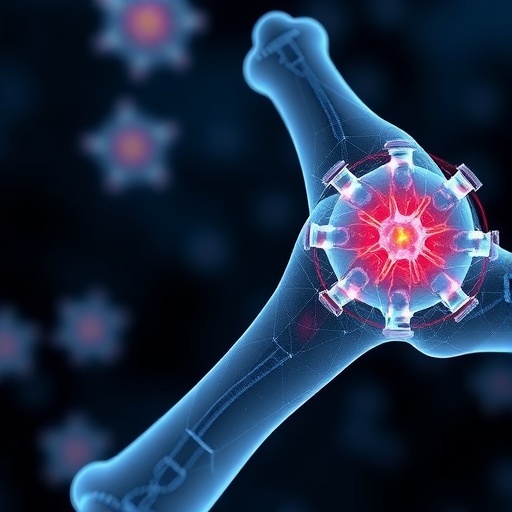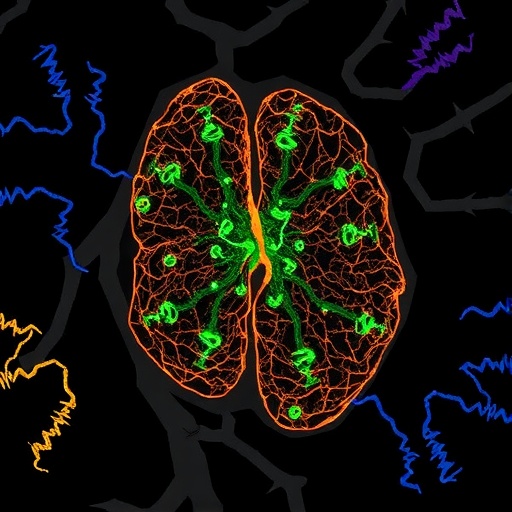In a groundbreaking advancement for orthopedic and regenerative medicine, recent research has spotlighted the extraordinary promise of magnesium-based implants, particularly the WE43 alloy, in promoting bone regeneration with enhanced biocompatibility and immune modulation. Unlike permanent implants, bioresorbable materials such as magnesium alloys hold the potential to significantly reduce the need for secondary surgeries and minimize long-term complications, thus revolutionizing patient outcomes in bone repair.
Magnesium’s appeal in biomedical applications arises from its unique combination of mechanical strength and biocompatibility, qualities that closely mimic natural bone tissue. This similarity allows implants to provide the necessary structural support while integrating seamlessly with the host tissue. However, the physiological challenges posed by magnesium degradation, including hydrogen gas formation and rapid corrosion, require sophisticated understanding to fully harness its clinical value.
The recent in vitro study led by Aydin et al. meticulously explored the osteogenic and immunomodulatory properties of WE43, a magnesium alloy specifically engineered for use in clinical settings. This comprehensive investigation also examined whether applying plasma electrolytic oxidation (PEO)—a surface modification technique known for enhancing corrosion resistance—could amplify the implant’s osteogenic capabilities.
.adsslot_P8YXziaLIJ{ width:728px !important; height:90px !important; }
@media (max-width:1199px) { .adsslot_P8YXziaLIJ{ width:468px !important; height:60px !important; } }
@media (max-width:767px) { .adsslot_P8YXziaLIJ{ width:320px !important; height:50px !important; } }
ADVERTISEMENT
Contrary to expectations, the addition of PEO surface treatment did not further enhance osteoblastic differentiation or mineralization. This suggests that the inherent properties of WE43 are sufficiently optimized for osteoinduction, and that surface modifications may not always translate to improved biological outcomes. Such insights are pivotal in guiding future implant design, emphasizing the need for a balance between surface engineering and biocompatible core materials.
An equally important facet of this study involved understanding the immune response elicited by WE43. Using RAW264.7 murine macrophages, researchers observed a minimal inflammatory reaction upon direct contact with the alloy. This well-controlled inflammatory response is vitally important, as excessive inflammation can hinder healing, while a balanced immune activation promotes tissue regeneration. The study therefore highlights WE43’s ability to modulate the immune environment favorably.
Delving deeper into the intricate interplay between the immune system and bone formation, the study demonstrated that factors secreted by macrophages exposed to WE43 implants stimulated Alpl expression in osteoblasts. This osteoimmune effect illustrates a synergistic mechanism by which magnesium alloys can expedite the transition from inflammation to bone remodeling, underscoring their multifunctional therapeutic potential.
The practical implications of these findings are substantial. Employing magnesium alloys like WE43 could redefine orthopedic surgical protocols by providing implants that are not only structurally effective and biocompatible but also actively enhance and coordinate the biological healing process. This could lead to faster recovery times and better overall bone regeneration outcomes in patients.
Furthermore, this research advances our understanding of biomaterials beyond passive scaffolds to active participants in tissue engineering. The osteoimmunomodulatory capabilities of WE43 present a paradigm shift, aligning biomaterial science with immunology to design implants that harness the body’s natural healing pathways as opposed to merely supporting them mechanically.
These findings invite future research directions aimed at optimizing magnesium implant degradation rates, mechanical properties, and surface characteristics to fully exploit their osteoimmune potential. Rigorous in vivo studies should follow to validate the translational value of these promising in vitro results and ultimately pave the way for FDA-approved bioresorbable magnesium implants in clinical orthopedic practice.
In summary, the WE43 magnesium alloy stands out as a sophisticated biomaterial that merges excellent biocompatibility with active promotion of osteogenesis and immune modulation. Its ability to minimize inflammatory response while enhancing osteoblast function represents a significant leap forward in bone healing technologies. This study sets a new standard in magnesium implant research and opens exciting avenues for developing next-generation bioresorbable implants that effectively harness the body’s own regenerative biology.
As this research delivers compelling evidence for the clinical potential of WE43, it also prompts the biomedical community to rethink implant design strategies, placing immune compatibility and bioactivity at the forefront. With obesity, aging populations, and trauma-related bone injuries on the rise worldwide, innovations like these are critical to meeting the growing demands for safe, effective, and regenerative orthopedic solutions.
This novel insight into the osteoimmunological dynamics of magnesium implants heralds an era where biomaterials are not only passive carriers of mechanical load but active orchestrators of tissue healing. WE43’s capacity to naturally steer the inflammatory response to benefit bone regeneration could ultimately revolutionize how surgeons approach bone repair, significantly improving quality of life for millions globally.
Subject of Research: Osteogenic and immunomodulatory potential of WE43 magnesium alloy implants.
Article Title: In vitro study on the osteoimmunological potential of magnesium implants (WE43MEO)
Article References:
Aydin, S., Soares, A.P., Fischer, H. et al. In vitro study on the osteoimmunological potential of magnesium implants (WE43MEO). BioMed Eng OnLine 24, 90 (2025). https://doi.org/10.1186/s12938-025-01413-5
Image Credits: AI Generated
DOI: https://doi.org/10.1186/s12938-025-01413-5
Tags: biocompatibility in orthopedic applicationsbioresorbable magnesium alloyscorrosion resistance in biomedical materialsimmune modulation in bone healingin vitro studies on bone healthmagnesium degradation challenges in implantsmagnesium-based implantsosteogenic properties of magnesium implantsplasma electrolytic oxidation in implantsregenerative medicine advancementssecondary surgeries in orthopedic proceduresWE43 alloy for bone regeneration






